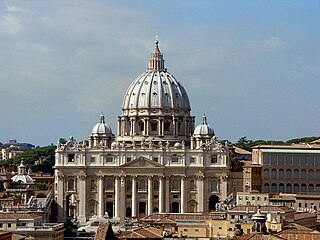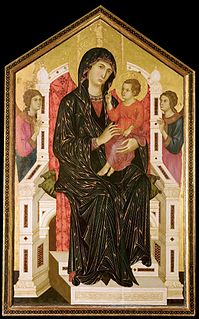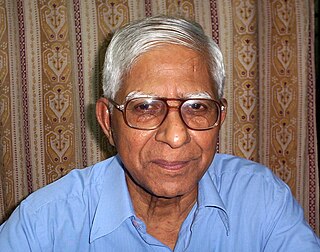
The Second Ecumenical Council of the Vatican, commonly known as the Second Vatican Council or Vatican II, addressed relations between the Catholic Church and the modern world. The council, through the Holy See, was formally opened under the pontificate of Pope John XXIII on 11 October 1962 and was closed under Pope Paul VI on the Solemnity of the Immaculate Conception on 8 December 1965.

Dominus Iesus is a declaration by the Congregation for the Doctrine of the Faith, approved in a Plenary meeting of the Congregation and signed by its then Prefect, Joseph Cardinal Ratzinger, later Pope Benedict XVI, and of its then Secretary, Archbishop Tarcisio Cardinal Bertone, later Cardinal Secretary of State. The declaration was approved by Pope John Paul II and was published on August 6, 2000. It is subtitled "On the Unicity and Salvific Universality of Jesus Christ and the Church". It is most widely known for its elaboration of the Catholic dogma that the Catholic Church is the sole true Church of Christ.

Ad gentes is the Second Vatican Council's decree on missionary activity. The title is Latin for "To the Nations," and is from the first line of the decree, as is customary with Roman Catholic documents. It establishes evangelization as one of the fundamental missions of the Catholic Church and reaffirms the tie between evangelization and charity for the poor. Ad Gentes also calls for the formation of strong Christian communities as well as strong relations with other Christians. Finally, it lays out guidelines for the training and actions of the missionaries.
Inter mirifica On the Means of Social Communication is a decree made by the council at Vatican II and it was promulgated on December 4, 1963 by Pope Paul VI. It is composed of 24 points, with the aim of addressing the concerns and problems of social communication. Inter mirifica identifies social communication as the press, cinema, television, and other similar types of communication interfaces. The title is taken from the opening lines of the document and means "among the wonderful".
The following outline is provided as an overview of and topical guide to Christian theology:
Miaphysitism is the Christological doctrine upheld by the Oriental Orthodox Churches, who include the Coptic Orthodox Church of Alexandria, the Syriac Orthodox Church and the Armenian Apostolic Church. Rather than using the wording established at the Council of Chalcedon (451) that Jesus is one "person" in two "natures", a divine nature and a human nature, they hold that Jesus, the “Incarnate Word, is fully divine and fully human, in one physis. In modern times, these differences are considered to be in word rather than in belief..

The theology of Pope Benedict XVI, as promulgated during his pontificate, consists mainly of three encyclical letters on love (2005), hope (2007), and "charity in truth" (2009), as well as apostolic documents and various speeches and interviews. Benedict's theology underwent developments over the years, many of which were characterized by his leadership position in the Congregation for the Doctrine of the Faith, which is entrusted with preserving the Catholic faith in its entirety. His theology originated in the view that God speaks to us through the Church today and not just through the Bible. The Bible is not a natural science textbook, but rather it is the essential testimonial of God’s revelation. One cannot get from it a scientific explanation of how the world arose; one can only glean religious experience from it. Thus Scripture would not wish to inform us about how the different species of plant life gradually appeared or how the sun and the moon and the stars were established. Its purpose ultimately would be to say one thing: God created the world.
Ut unum sint is an encyclical by Pope John Paul II of 25 May 1995. It was one of 14 encyclicals issued by John Paul II. Cardinal Georges Cottier, Theologian emeritus of the Pontifical Household, was influential in drafting the encyclical.
Veritatis splendor is an encyclical by Pope John Paul II. It expresses the position of the Catholic Church regarding fundamentals of the Church's role in moral teaching. The encyclical is one of the most comprehensive and philosophical teachings of moral theology in the Catholic tradition. It was promulgated on 6 August 1993. Cardinal Georges Cottier, Theologian emeritus of the Pontifical Household and Cardinal-Deacon of Santi Domenico e Sisto the University Church of the Pontifical University of Saint Thomas Aquinas was influential in drafting the encyclical, as was Servais-Théodore Pinckaers, a professor of moral theology at the University of Fribourg. , while others stress its lasting validity and importance.

Pontifical University of the Holy Cross is a Roman Catholic university under the Curial Congregation for Catholic Education, now entrusted to the Prelature of the Holy Cross and Opus Dei, or more commonly called Opus Dei. It was started in 1984 by Opus Dei, with the aim of offering the universal church an effective instrument for formation and research. Located in the heart of Rome, it has two campuses. One is in Piazza di Sant'Apollinare, northern area of Piazza Navona; Another is Via dei Farnesi near the famous Palazzo Farnese. Its stated mission is "to serve the whole Church by means of a broad and thorough work of research and formation in the ecclesiastical sciences, cooperating according to its special function with the evangelizing mission of the Church in the whole world."
The Pontifical Council for Social Communications was a dicastery of the Roman Curia that was suppressed in March 2016 and merged into the Secretariat for Communications.
Anonymous Christian is the controversial notion introduced by the Jesuit theologian Karl Rahner (1904–1984) that declares that people who have never heard the Christian Gospel might be saved through Christ. Non-Christians could have "in [their] basic orientation and fundamental decision," Rahner wrote, "accepted the salvific grace of God, through Christ, although [they] may never have heard of the Christian revelation."

The theology of Pope Pius XII is reflected in his forty-one encyclicals, as well as speeches and nearly 1000 messages, during his almost 20-year pontificate. The encyclicals Mystici corporis and Mediator Dei advanced the Catholic understanding of membership and participation in the Church. The encyclical Divino afflante Spiritu began opening the door to historical-critical biblical studies. But his magisterium was far larger and is difficult to summarize. In numerous speeches Catholic teaching is related to various aspects of life, education, medicine, politics, war and peace, the life of saints, Mary, the mother of God, things eternal and temporal.

The history of Catholic Mariology traces theological developments and views regarding Mary from the early Church to the 21st century. Mariology is a mainly Catholic ecclesiological study within theology, which centers on the relation of Mary and the Church. Catholic Mariology is the encyclopedic area of theology concerned with Mary, the Mother of God. Theologically, it not only deals with her life, but her veneration in daily life, prayer, art, music, architecture, in modern and ancient Christianity throughout the ages.

Mariological papal documents have been a major force that has shaped Roman Catholic Mariology over the centuries. Mariology is developed by theologians on the basis not only of Scripture and Tradition but also of the sensus fidei of the faithful as a whole, "from the bishops to the last of the faithful", and papal documents have recorded those developments, defining Marian dogmas, spreading doctrines and encouraging devotions within the Catholic Church.

Catholic ecumenical councils include 21 councils over a period of some 1900 years. While definitions changed throughout history, in today's Catholic understanding ecumenical councils are assemblies of Patriarchs, Cardinals, residing Bishops, Abbots, male heads of religious orders and other juridical persons, nominated by the Pope. The purpose of an ecumenical council is to define doctrine, reaffirm truths of the Faith, and extirpate heresy. Council decisions, to be valid, are approved by the popes. Participation is limited to these persons, who cannot delegate their voting rights.

Evangelii nuntiandi (abbreviation:EN) is an apostolic exhortation issued on 8 December 1975 by Pope Paul VI on the theme of Catholic evangelization. The title, taken from the opening words of the original Latin text, means "in proclaiming the Gospel". It affirms the role of every Christian, not only ordained ministers, priests, and deacons, or religious, or professional church staff, in spreading the Gospel of Jesus Christ.
The Pontifical Athenaeum Regina Apostolorum is an educational institute of the Catholic Church in Rome.

Rev. Kurien Kunnumpuram S.J. was a Roman Catholic, Indian Jesuit priest and well-known Christian theologian. A member of the academic staff of the Faculty of Theology at Jnana-Deepa Vidyapeeth (JDV), Pune (India) (Emeritus), he contributed in the field of ecclesiology, particularly with regard to Vatican II.

The following outline is provided as an overview of and topical guide to the Catholic Church:









